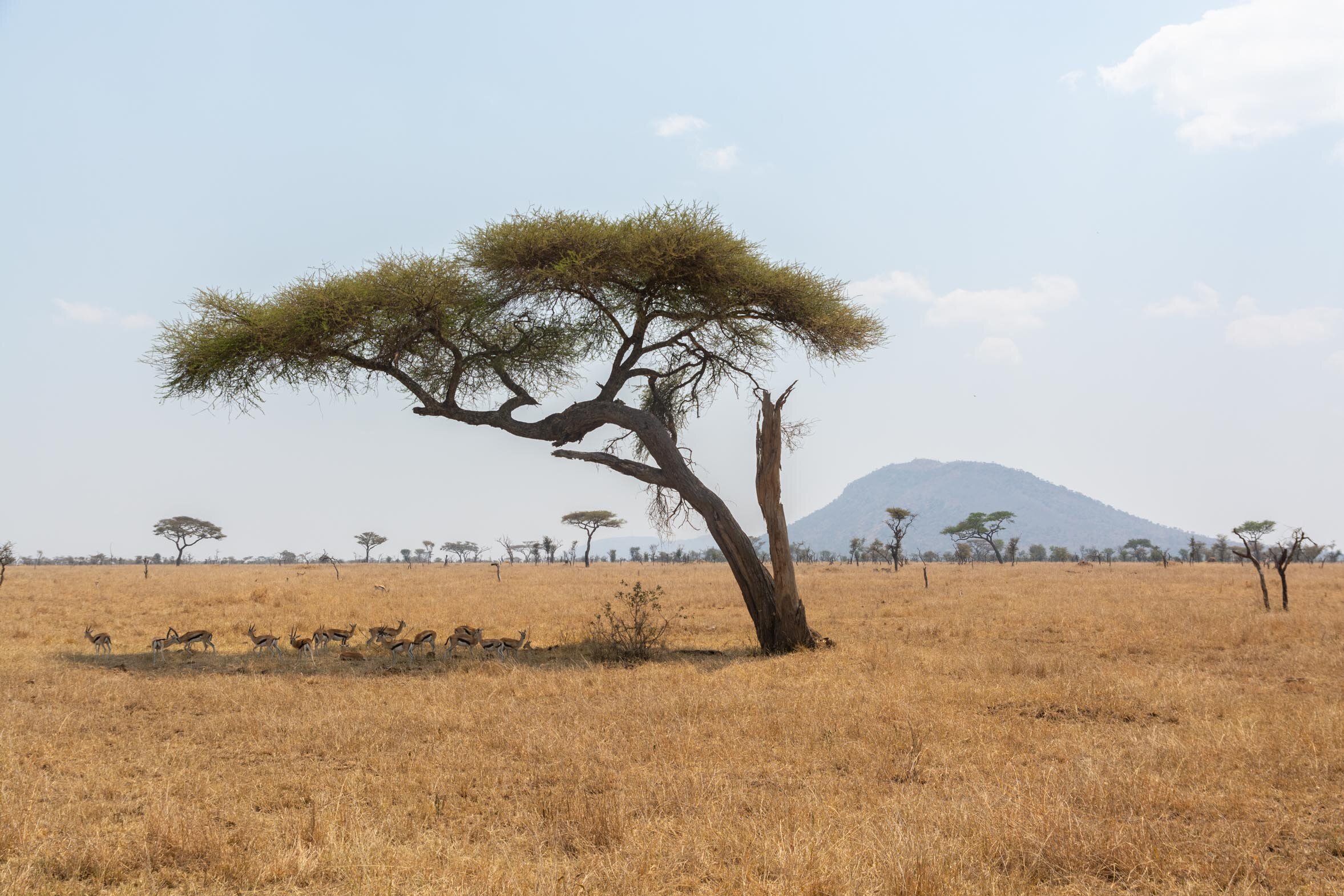
july 2016
6°S 35°E
i haven’t got anything against “comfortable” tourism. i am aware it is a distinct (as opposed to “bad” or “dishonest”) branch of the tourism industry, which i am sure has proven very lucrative for numerous countries. i am not going to go on a rant for the rest of this piece and this isn’t meant to be a pretentious critique of an otherwise very pleasant travelling experience.
traveling across Tanzania is generally done in the company of an army of local guides. naturally, tourists won’t be seen crossing the Serengeti on foot. instead, an entire fleet of armoured trucks (and this is not an overstatement) drives groups of tourists from one destination (or lodge) to the next. based on my own experience, most variants of accommodation are a bit like forts - walled off from the untamed wilderness or the settlements of locals, kept in perfect order by well organised battalions of hospitality workers.
despite travelling in a glass bowl at all times, the natural spectacle would unfold in beautifully unpredictable ways. the illusion of watching a slideshow would suddenly be shattered by a three-tonne elephant charging at one of the armoured cars, only to back out in the last moment. an entire convoy would stop unexpectedly and tour guides would be seen nervously checking their watches as a lion lounged across the road. other times, the serenity of the landscape would shake at the bellowing of hippos. stopping for the night in a campsite out in the Serengeti had us waiting around in the dark for a short while - fire ants had invaded our tent. lovers of nature or not, we didn’t want to answer to the ants.
anyway - no use making this longer than it should be. as critical as i normally am of “tourism on rails” or “postcard tourism”, there’s no better way of experiencing the African wildlife than this. unless, of course, you’re confident enough to wrestle a lion. personally, i’d steer clear of that.
july 2016
6°S 35°E
i haven’t got anything against “comfortable” tourism. i am aware it is a distinct (as opposed to “bad” or “dishonest”) branch of the tourism industry, which i am sure has proven very lucrative for numerous countries. i am not going to go on a rant for the rest of this piece and this isn’t meant to be a pretentious critique of an otherwise very pleasant travelling experience.
traveling across Tanzania is generally done in the company of an army of local guides. naturally, tourists won’t be seen crossing the Serengeti on foot. instead, an entire fleet of armoured trucks (and this is not an overstatement) drives groups of tourists from one destination (or lodge) to the next. based on my own experience, most variants of accommodation are a bit like forts - walled off from the untamed wilderness or the settlements of locals, kept in perfect order by well organised battalions of hospitality workers.
despite travelling in a glass bowl at all times, the natural spectacle would unfold in beautifully unpredictable ways. the illusion of watching a slideshow would suddenly be shattered by a three-tonne elephant charging at one of the armoured cars, only to back out in the last moment. an entire convoy would stop unexpectedly and tour guides would be seen nervously checking their watches as a lion lounged across the road. other times, the serenity of the landscape would shake at the bellowing of hippos. stopping for the night in a campsite out in the Serengeti had us waiting around in the dark for a short while - fire ants had invaded our tent. lovers of nature or not, we didn’t want to answer to the ants.
anyway - no use making this longer than it should be. as critical as i normally am of “tourism on rails” or “postcard tourism”, there’s no better way of experiencing the African wildlife than this. unless, of course, you’re confident enough to wrestle a lion. personally, i’d steer clear of that.
















